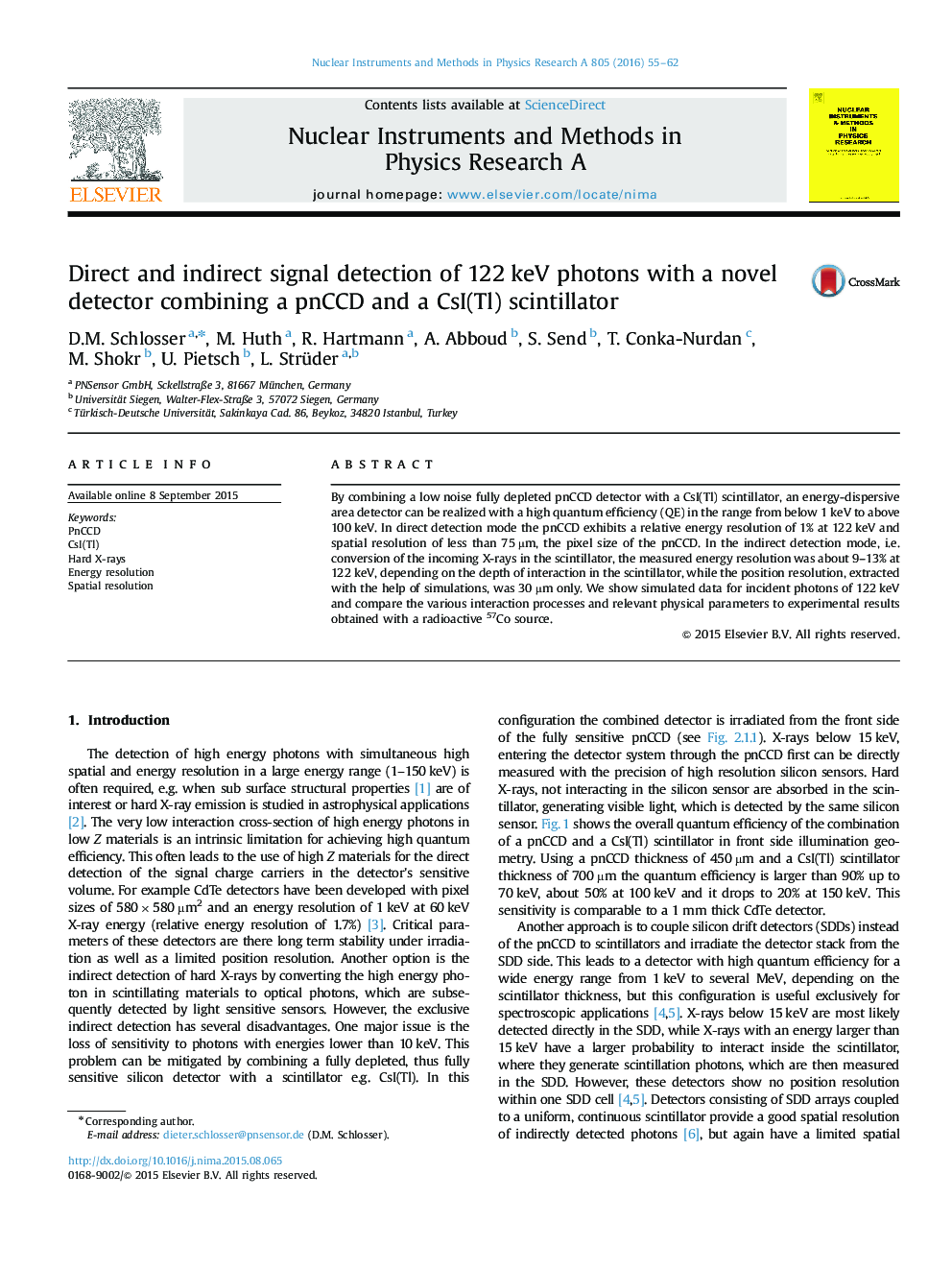| Article ID | Journal | Published Year | Pages | File Type |
|---|---|---|---|---|
| 8171431 | Nuclear Instruments and Methods in Physics Research Section A: Accelerators, Spectrometers, Detectors and Associated Equipment | 2016 | 8 Pages |
Abstract
By combining a low noise fully depleted pnCCD detector with a CsI(Tl) scintillator, an energy-dispersive area detector can be realized with a high quantum efficiency (QE) in the range from below 1 keV to above 100 keV. In direct detection mode the pnCCD exhibits a relative energy resolution of 1% at 122 keV and spatial resolution of less than 75 µm, the pixel size of the pnCCD. In the indirect detection mode, i.e. conversion of the incoming X-rays in the scintillator, the measured energy resolution was about 9-13% at 122 keV, depending on the depth of interaction in the scintillator, while the position resolution, extracted with the help of simulations, was 30 µm only. We show simulated data for incident photons of 122 keV and compare the various interaction processes and relevant physical parameters to experimental results obtained with a radioactive 57Co source.
Related Topics
Physical Sciences and Engineering
Physics and Astronomy
Instrumentation
Authors
D.M. Schlosser, M. Huth, R. Hartmann, A. Abboud, S. Send, T. Conka-Nurdan, M. Shokr, U. Pietsch, L. Strüder,
